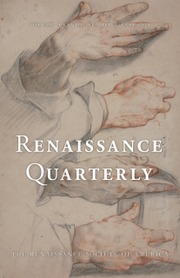This volume represents a veritable tour de force in several respects: not only does it include the translation of every text written by the noblewoman, nun, and saint Camilla Battista da Varano; it is also based on painstaking historical, philological, theological, and religious analysis of these writings; and it offers an incredibly rich view into one woman’s life experience and belief system in early modernity. Even as he achieves this, William Hudon also calls into question some of the assumptions, naming conventions, and certainties that ultimately come from privileging some authors, approaches, or textual traditions over others.
Camilla (later, as a nun, Battista) was “the illegitimate daughter of the prominent Varano family of east-central Italy” (1), born in 1458 and educated at the Camerino court, where “a cultural and spiritual tradition” (11–12) had prospered for several decades. Women there “received an intensive humanist education, equipping them for political involvement” (12); concurrently, they received “an exposure of similar intensity to Christian spirituality and devotion” (13). Hudon rightly emphasizes that these two facets of Varano’s upbringing were not in contrast; in fact, they coexisted. Early on in his informative, exhaustive, and layered introduction, he reminds us of Gabriella Zarri’s invitation that “a thorough reconsideration of the condition of early modern religious women and their position ‘between Renaissance and Counter-Reformation’ would result in a better understanding of each of those terms” (7). There is no doubt in my mind that readers of the present volume will be powerfully engaged in this direction, given the thematic scope and linguistic skills that Varano’s writings display. This is possible because the editor and translator has painstakingly assembled here all extant writings by Varano, so we now enjoy the entirety of her works (in English translation) alongside illuminating footnotes that demonstrate the editor’s (and the writer’s) depth of scriptural and literary knowledge.
Varano engaged many topics: from the personal spiritual autobiography The Spiritual Life and Instructions to a Disciple, to a rewriting and explication of the Rule of the Clarisse, to a letter (one of only four extant) to Muzio Colonna, her brother-in-law and mercenary troop leader, asking him to spare the city of Montecchio from being occupied by his army. Some stylistic and rhetorical elements undeniably recur, such as the modesty topos that many other early modern writers utilized, foregrounded in the very title of “A treatise on the purity of heart necessary for religious perfection, composed by Sister Battista da Camerino, Clarist nun of the monastery of Saint Clare of Camerino, at the request of her spiritual father” (195; emphasis added) and expressed in its prologue through the following assertion: “You [Jesus] have deigned at times to utter your truths through the mouth of a woman” (195). Another element that emerges is the deep empathy that Varano inserts in her descriptions of the physical and emotional grief she felt (see, for example, a passage in her Spiritual Life included in the portion “Interior Debate over the Problem of Her Religious Vocation”) (72–73); this is evident throughout her Considerations on the Passion of Our Lord, rife with descriptions of bodily and psychological harm and pain.
I want to single out the recurrence of paradoxes as an adequate tool to express the seeming contradictions of what can only be taken by faith, which is of course not unique to Varano’s devotional and religious works. Paradoxes emerge most fully in her four poems, one in Latin and three in the vernacular (319–32). A literary consideration of Varano’s writings could in fact start from these shorter texts, examining them through the textual and cultural lens of the paradoxes she employs.
In sum, this comprehensive volume brings back an additional “Other Voice” with the indispensable apparatus to understand and contextualize it. Hudon is to be congratulated for his insightful and learned introductory pages and the meticulous footnote references to biblical and other texts, which allow even a novice reader to grasp what Varano wrote in its cultural environment, and which offered this reader food for thought on sources incorporated in another woman writer’s works.



